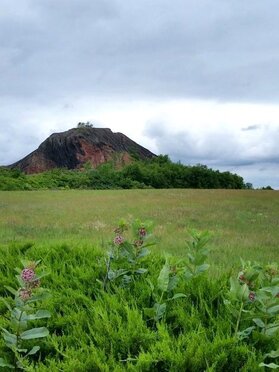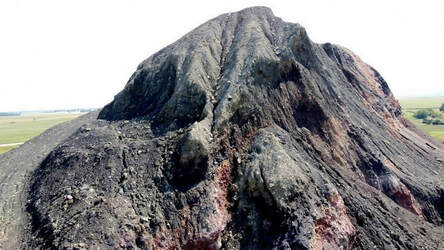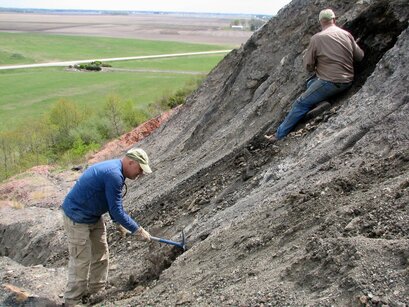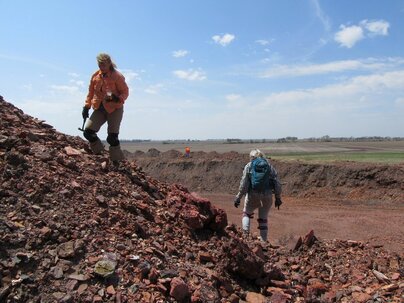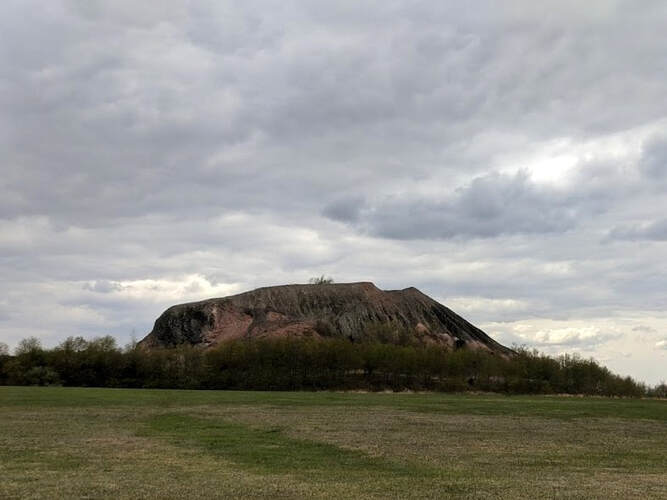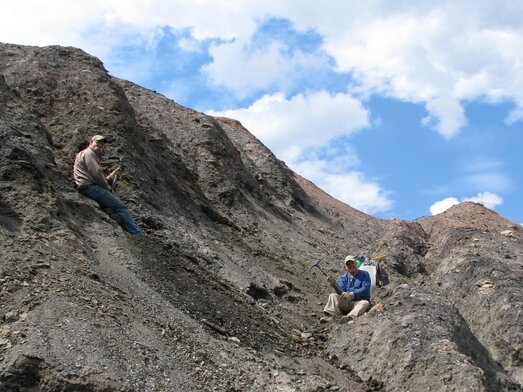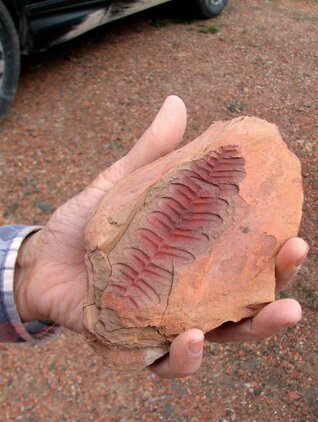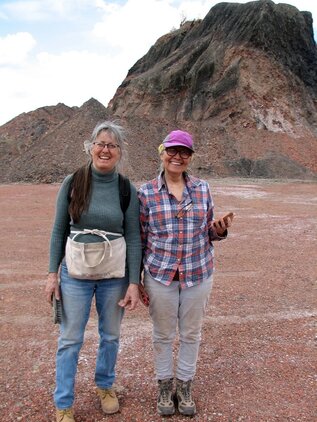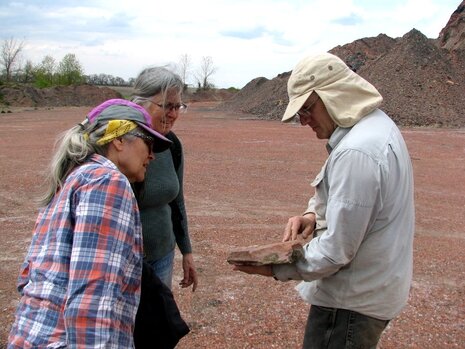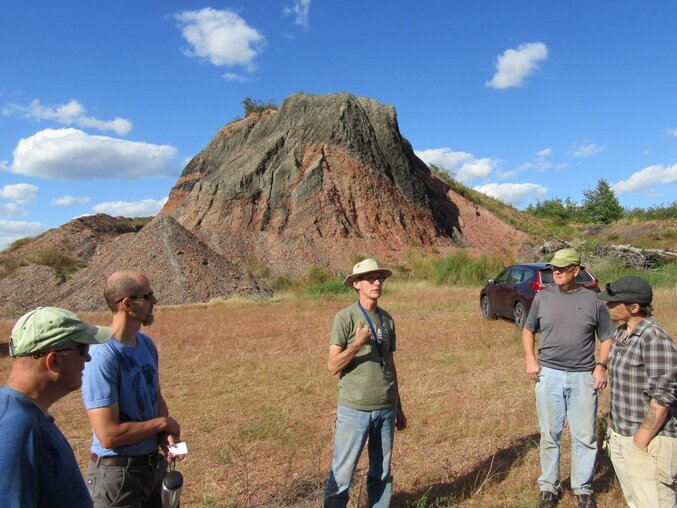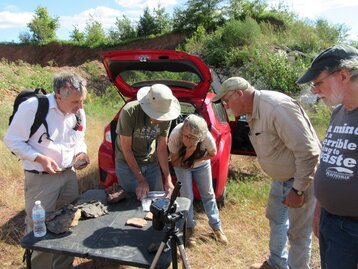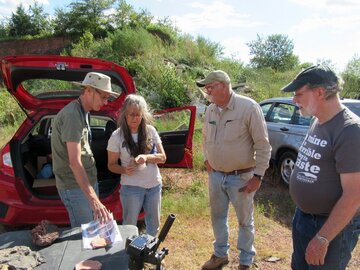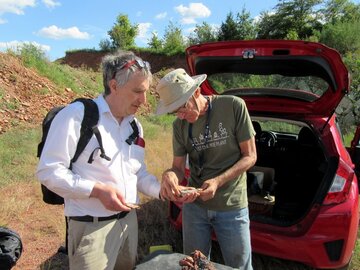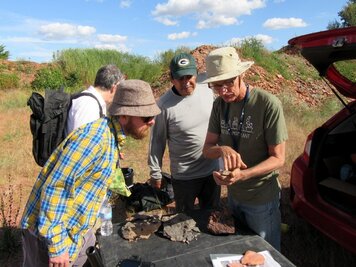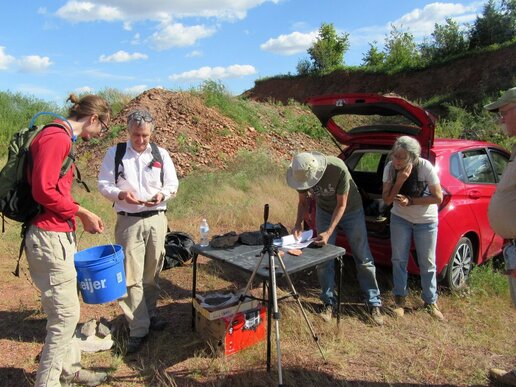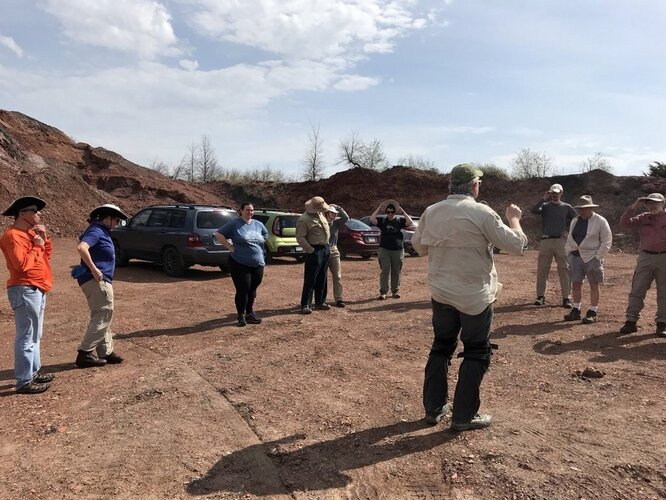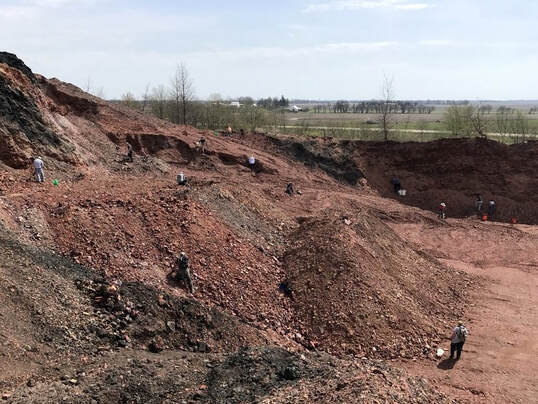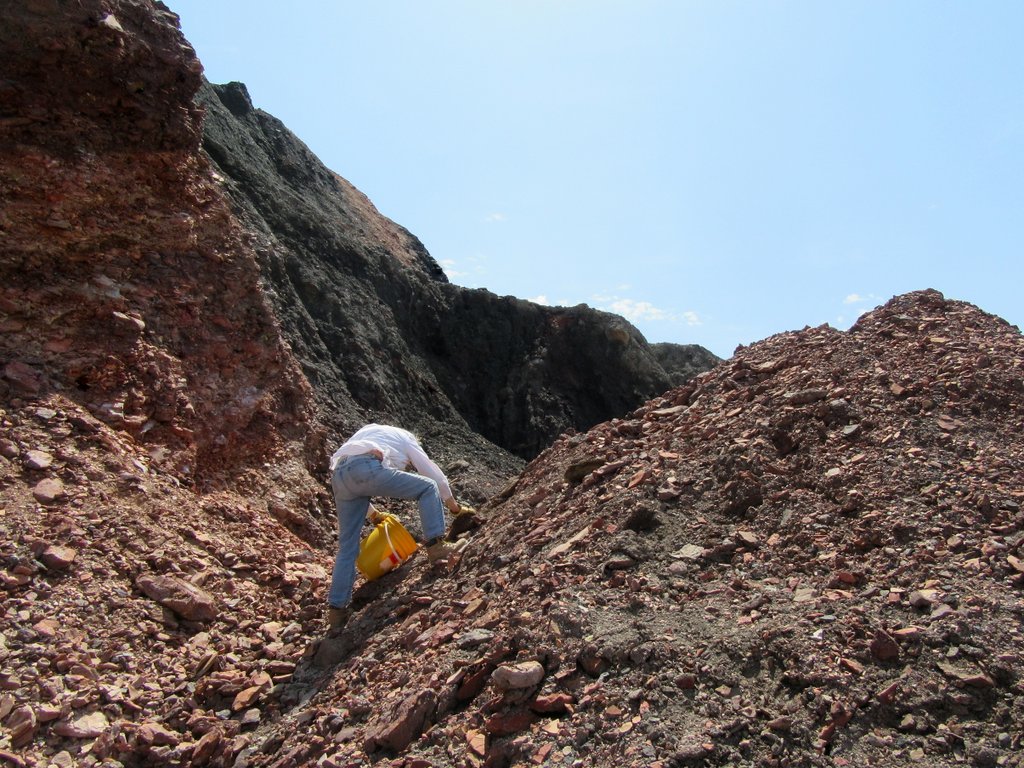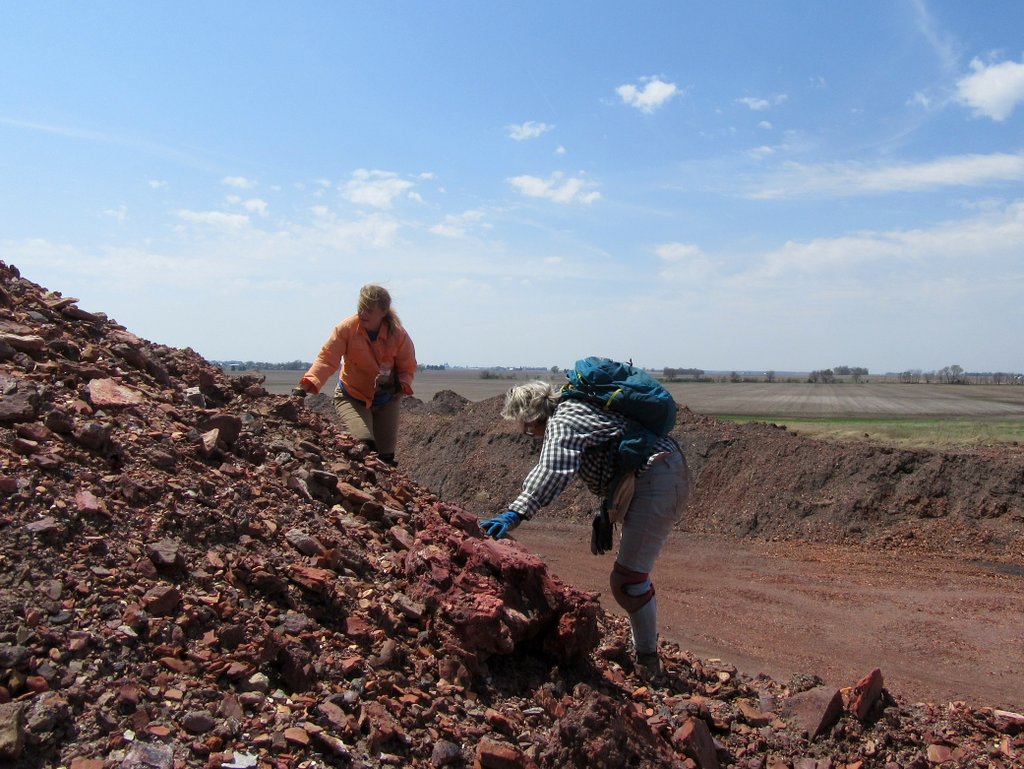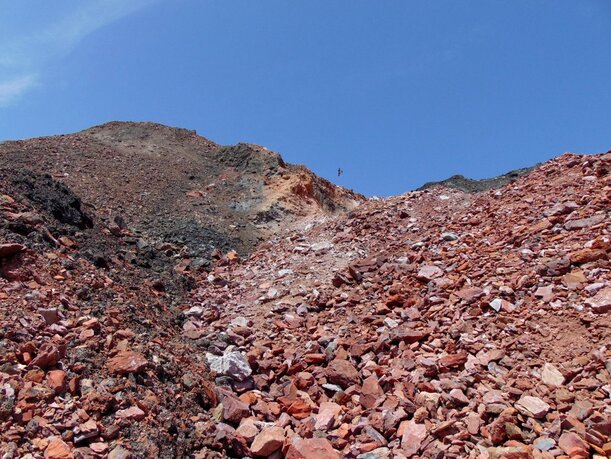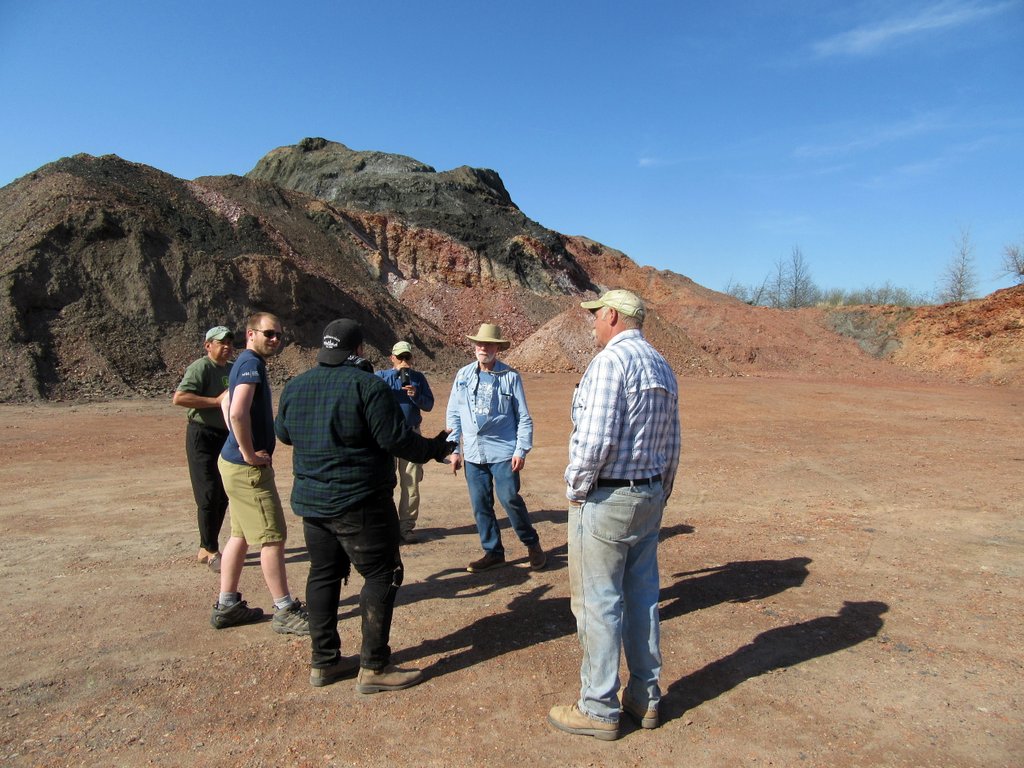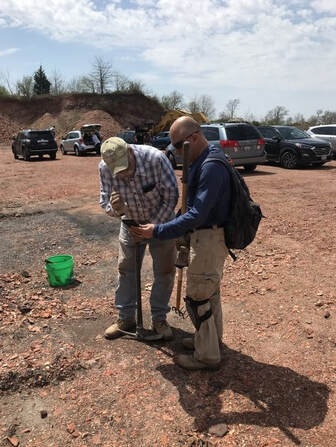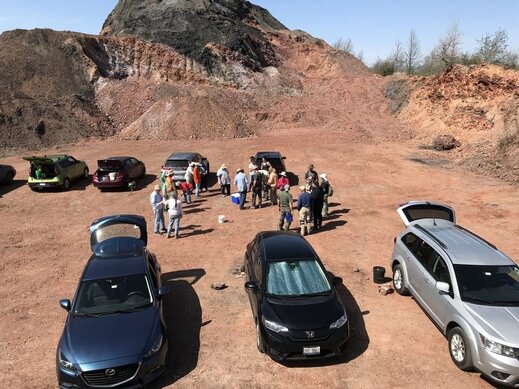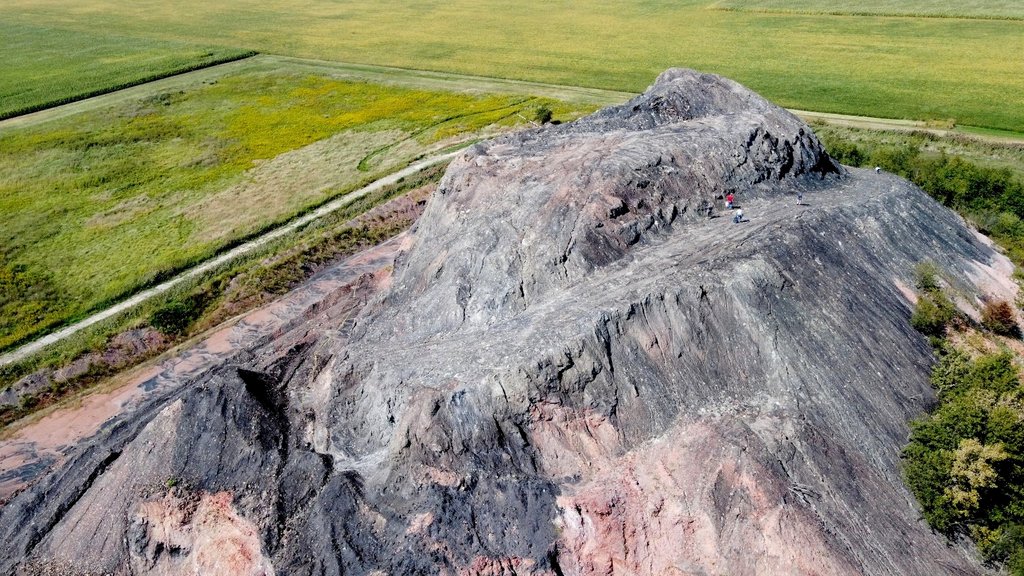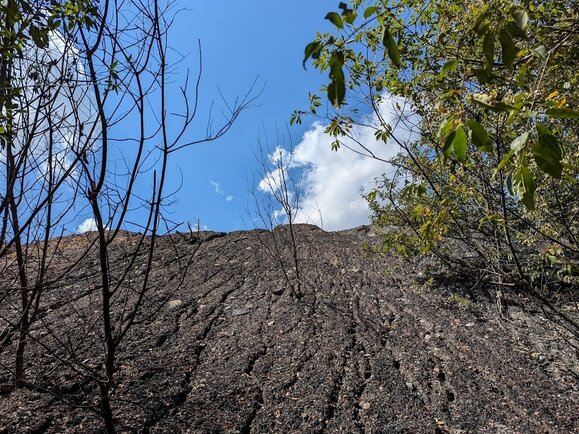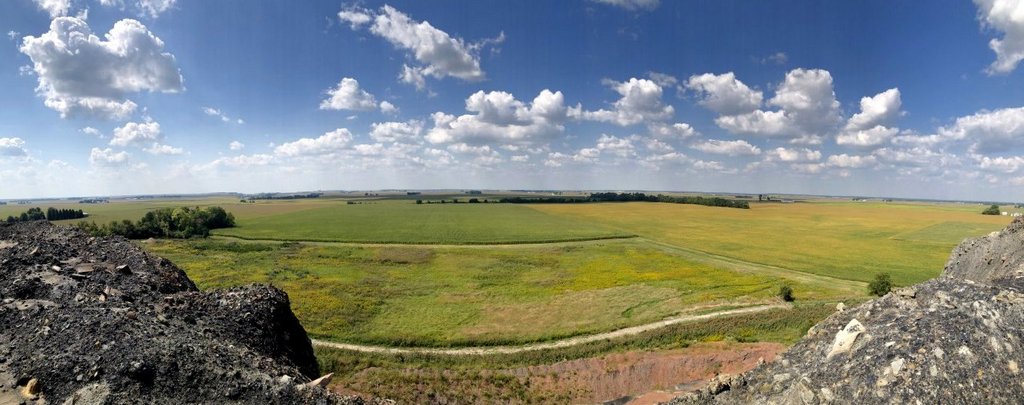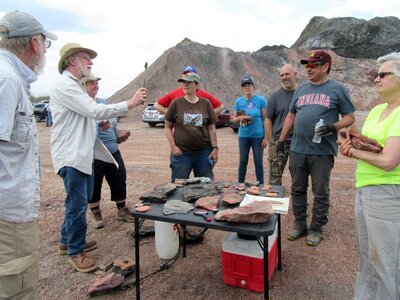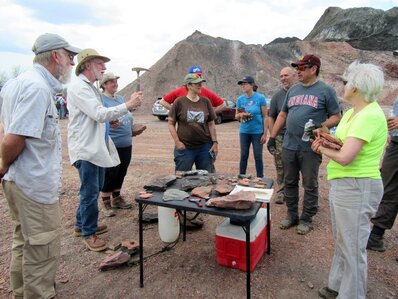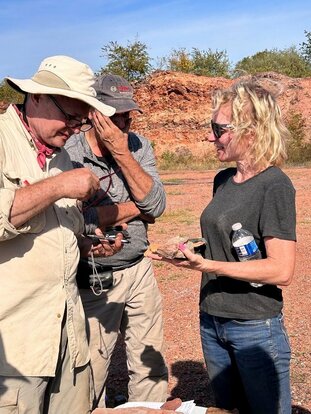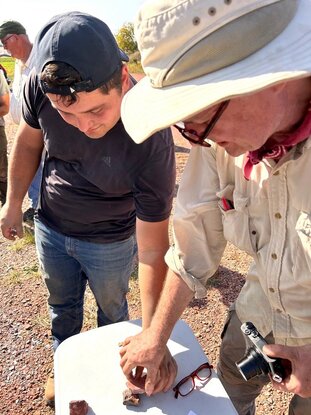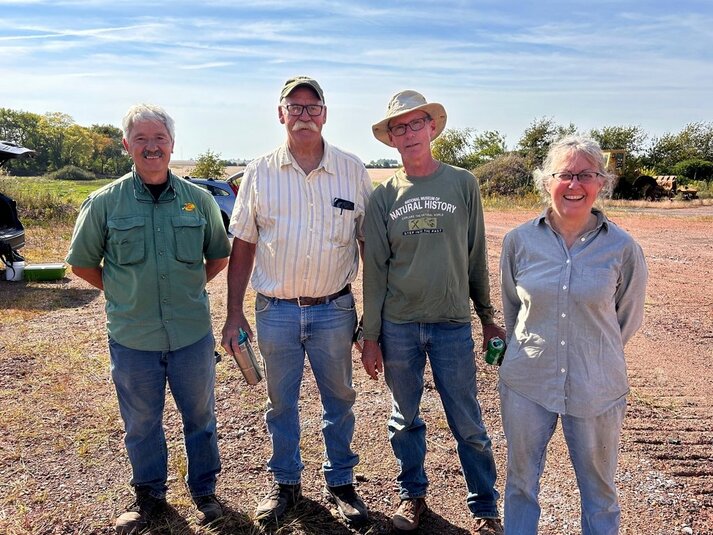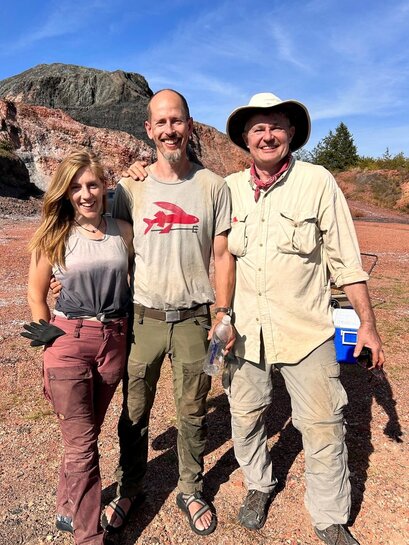Herrin Fossil Flora and Fauna
Site Description and History
The following text is an excerpt from a booklet entitled,
Guide to the Geology of the Kickapoo State Park and Surrounding Area, Vermillion County, Illinois,
by Wayne T. Frankie. It was published in 2005 by the Illinois Department of Natural Resources and the
Illinois State Geologic Survey. It's one of series and identified as Field Trip Guidebook 2005A.
Guide to the Geology of the Kickapoo State Park and Surrounding Area, Vermillion County, Illinois,
by Wayne T. Frankie. It was published in 2005 by the Illinois Department of Natural Resources and the
Illinois State Geologic Survey. It's one of series and identified as Field Trip Guidebook 2005A.
|
The gob pile, an abandoned mine dump, is the accumulation of waste products from an underground mine (fig. 12). The piles are known variously as gob piles, slate dumps, boney piles, and culm banks. The gob pile stands about 150 feet above the general land surface. Excellent plant fossils have been collected from the gob pile at this mine. A second large gob pile, located southeast of this stop on the east side
of the road, has been reclaimed. |
Photo: Ben Riegler
|
The Dering Coal Company opened the No. 4 Mine here in 1904 to mine the Herrin Coal, which was reported to range from 4.5 to 10.0 feet thick and averaged 5.75 feet at a depth of 208 feet. Four feet of Danville Coal was reported to occur 100 feet from the surface. The mine shaft was located about 300 feet west of the road at the end of the gob pile. The Dering Coal Company operated the No. 4 Mine from 1904 to 1909, followed by the Brazil Block Coal Company, Brazil No. 4 mine, from 1909 to 1911. The Dering Coal Company once again operated the mine between 1911 and 1916, followed by the Peabody Coal Company, which changed the mine name to the Peabody No. 24 Mine and operated it from 1916 to 1944. The last owner was the Chicago Harrisburg Coal Company, which operated the mine from 1944 to 1946. The mine had a cumulative production of 18,054,349 tons.
|
Drone photo: Charles Nicchia
|
The gob pile was created by dumping unwanted rocks that were removed from the mine. The early mining methods were labor intensive. Coal miners dug several inches of underclay by hand from under the coal seam so they could break the coal down and out from what is called the working face. In addition, along their haulage ways, they dug out rock above the coal to make a high tunnel so that mules pulling the mine cars could walk through. Rock that fell and sagged into the haulage ways had to be removed to keep them open. The waste rock that could not be stowed in the underground openings left after the coal was mined was brought to the surface and dumped on the pile.
|
The composition of the waste rock in the gob pile is from both the underclay, which is a soft gray shale, the rock the miners called “soapstone,” and the Energy Shale, the gray shale above the Herrin Coal that formed the roof
of the mine and was dug down to heighten the haulage ways. Exposed to weather, the shale softened, and finally turned to mud.
of the mine and was dug down to heighten the haulage ways. Exposed to weather, the shale softened, and finally turned to mud.
|
These gob piles contain iron pyrite, sometimes called “fool’s gold” because of its yellow metallic luster. Pyrite is iron sulfide, which is stable buried beneath the earth surface. When exposed to water and oxygen, however, pyrite oxidizes and produces sulfuric acid, iron oxides, and hydroxides. The iron oxides and hydroxides, which are similar to common rust, tint these gob piles red. Sulfuric acid, however, pollutes both the water and the soil around the mines.
|
Excavating for siderite concretions.
|
In addition, some gob piles have been known to spontaneously combust and burn for many years after the
old mines were abandoned. This combustion is initiated by the oxidation of the pyrite and the absorption of
oxygen. Air leaks through the pile to the coal and shale material and supplies the needed oxygen for combustion. Conditions do not allow heat to dissipate, and temperature rises, which ignites the coal and shale materials.
The cooked shale makes hard brick-like chips that clink underfoot. This red deposit is nicknamed “red dog”
by miners. Does the red shale remind you of the red bricks that were manufactured in the Danville area?
old mines were abandoned. This combustion is initiated by the oxidation of the pyrite and the absorption of
oxygen. Air leaks through the pile to the coal and shale material and supplies the needed oxygen for combustion. Conditions do not allow heat to dissipate, and temperature rises, which ignites the coal and shale materials.
The cooked shale makes hard brick-like chips that clink underfoot. This red deposit is nicknamed “red dog”
by miners. Does the red shale remind you of the red bricks that were manufactured in the Danville area?
|
Exploring the slopes of Red Dog Shale.
|
Less common are the plates of “blistered” black shale. The miners called this rock “slate,” perhaps because it is hard and splits into smooth sheets. The black shale generally lies on top of the gray shale above the Herrin Coal. Sometimes, however, the black shale is close enough to the coal to be taken down when heightening the haulage ways. Strewn over the slopes are dark gray and brown ironstone nodules—heavy for their sizes— which were formed in the gray shale above the coal.
Of course, there are a few pieces of coal on the pile. |
ESCONI Field Trip Scrapbook
April 2021
Photo: Rich Holm
Excavating for ironstone concretions in "uncooked" gray shale overburden.
ESCONI officer Andy Jansen showing off a fresh find.
September 2021
Jack Wittry, Collections Associate at the Field Museum, addressing field trip participants.
Showcasing specimens for photography and identification. Each documented find contributes to the survey project.
April 2022
Andrew Young giving an orientation on the paleontology and mining history of the site. - Photo: Ralph Jewell
Photo: Ralph Jewell
Scrambling and collecting on the precarious slopes of Red Dog Shale.
A hawk flying above the early 20th century shaft mine spoil. - Photo: Becky Monroe
Regrouping after collecting for Show-and-Tell. - Photo: Ralph Jewell
September 2022
Drone images showing the sheer scale of the site. - Photos: Charles Nicchia
Looking straight up the steep, eroded (and dangerous) eastern slope of the hill. - Photo: Rich Holm
A panoramic view looking west from the top of the spoil pile. - Photo: Connor Puritz
April 2023
Field trip leader, Dave Carlson, seeking a lost rock hammer's original owner.
ESCONI club officers and members - all regular visitors to this unique fossil collecting site.
September 2023
On-site identifying and photographing specimens during the
"show and tell" period after collecting. Photos: Kristi Overgaard
"show and tell" period after collecting. Photos: Kristi Overgaard
Field trip participants with Jack Wittry (second from right), Collections Associate at the Field Museum.
A beautiful day for climbing on a century-old coal mining spoil heap.
|
Header image: The Danville area shaft mine spoil as seen from a nearby road. Photo: Rich Holm.
|
|
Copyright © 2021 Andrew Young. Images on this page may be protected by copyright. They are presented here in accordance with fair use principles and are only being used for informational and educational purposes.
|
|
Copyright © 2020 Andrew Young. All rights reserved.
|
